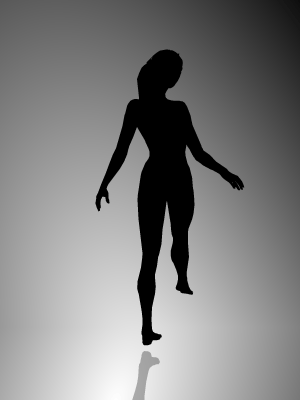Spinning Dancer Illusion
Which way is she spinning?
Explanation
The spinning dancer illusion is an example of a bistable motion illusion. It is possible to see the dancer moving either clockwise or anticlockwise. Often the direction of movement will suddenly switch as you are watching the image.
It has been suggested that the direction of perceived movement may depend on which hemisphere of the brain is more active.
If the dancer is seen moving ANTICLOCKWISE, then the LEFT hemisphere (typically responsible for language functions and sequential thinking) may be more active. Most people will tend to see the dancer moving anticlockwise because most people have a more dominant left hemisphere (this tends to be true at least for right-handers).
If the dancer is seen moving CLOCKWISE, then the RIGHT hemisphere of the brain (typically responsible for visual-spatial processing, face recognition and artistic ability) may be more active.
If the dancer is seen as regularly switching the direction of movement, this may indicate that BOTH hemispheres of the brain are more or less equally active.
This explanation for the spinning dancer illusion has been criticised by some scientists, who point to a lack of clear evidence for the relationship with hemispheric functioning.
Evidence that the hemispheres are involved in the perception of this illusion may come from attempts to activate the different hemispheres (e.g., by engaging in left or right hemisphere tasks) and observing whether this affects the direction of movement.
Perhaps the best indication of hemispheric involvement comes from looking to one side of the dancer or the other. If you look towards an area to the RIGHT of the dancer (B above) you may be more likely to see the figure moving CLOCKWISE. If you look towards an area to the LEFT of the dancer (A above), then you may notice that she moves ANTICLOCKWISE.
This could be explained by the fact that when looking to the left, the dancer will be perceived in your right visual field (which is connected to visual areas in the left hemisphere of the brain). Conversely, when looking to the right, the dancer will be perceived in your left visual field (which is connected to visual areas in the right hemisphere of the brain).
Credits and Further Reading
This illusion was created by web designer Nobuyuki Kayahara.
Left Brain – Right brain and the Spinning Girl

